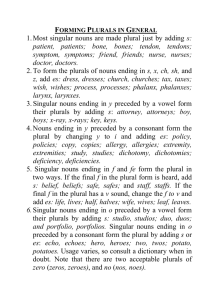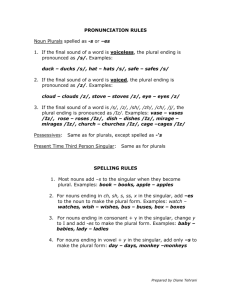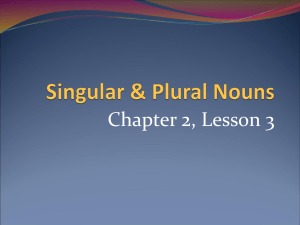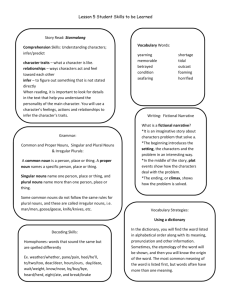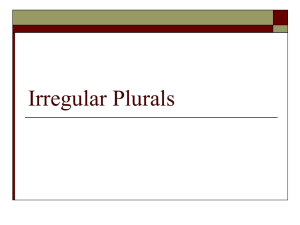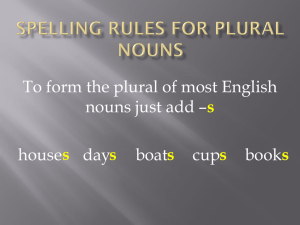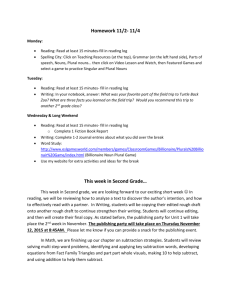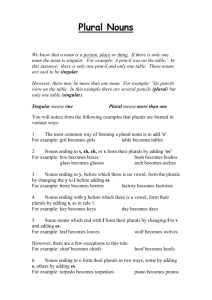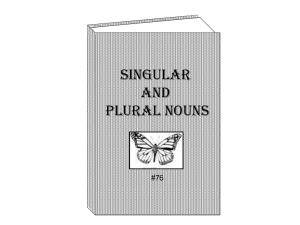The Learning Child School Language 2 HO 1.2 Name: Date: Topic
advertisement
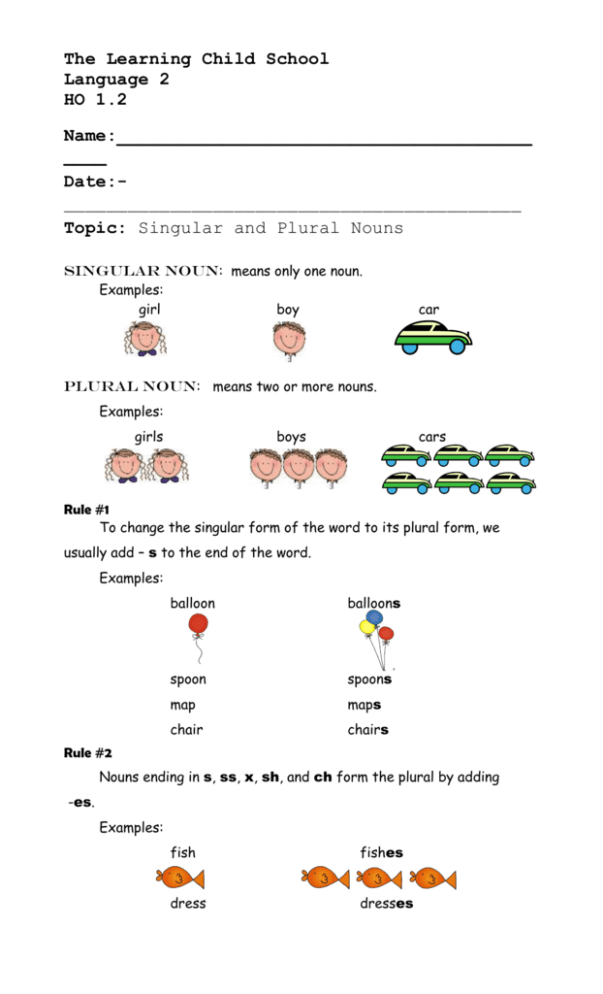
The Learning Child School Language 2 HO 1.2 Name:_______________________________________ ____ Date:___________________________________________ Topic: Singular and Plural Nouns Singular Noun: means only one noun. Examples: girl boy car Plural Noun: means two or more nouns. Examples: girls boys cars Rule #1 To change the singular form of the word to its plural form, we usually add – s to the end of the word. Examples: balloon balloons spoon spoons map maps chair chairs Rule #2 Nouns ending in s, ss, x, sh, and ch form the plural by adding -es. Examples: fish fishes dress dresses brush brushes fox foxes Rule #3 Nouns ending in - y preceded by a consonant is formed into a plural by changing - y to - ies. Examples: lady ladies city cities army armies cherry cherries Rule #4 Nouns ending in – y preceded by a vowel form their plurals by adding - s. Examples: boy boys turkey turkeys valley valleys Rule #5 Most nouns ending in o preceded by a consonant is formed into a plural by adding – es. Examples: hero heroes grotto grottoes potato potatoes ** The following examples are among those that add - s only. piano pianos solo solos halo halos Special Note: Most nouns ending in o preceded by a vowel is formed into a plural by adding - s. Examples: studio studios portfolio portfolios Rule #6 Some nouns ending in f or fe are made plural by changing f or fe to - ves. Examples: wife wives leaf leaves knife knives life lives **The following examples form their plurals by addding - s. chief chiefs hoof hoofs roof roofs Rule #7 We make the plural form of some nouns by changing the spelling. These are called irregular nouns. Examples: tooth teeth goose geese child children ox oxen louse lice man men Special Note: Some nouns don’t have singular form like: scissors oats measles mumps pants
